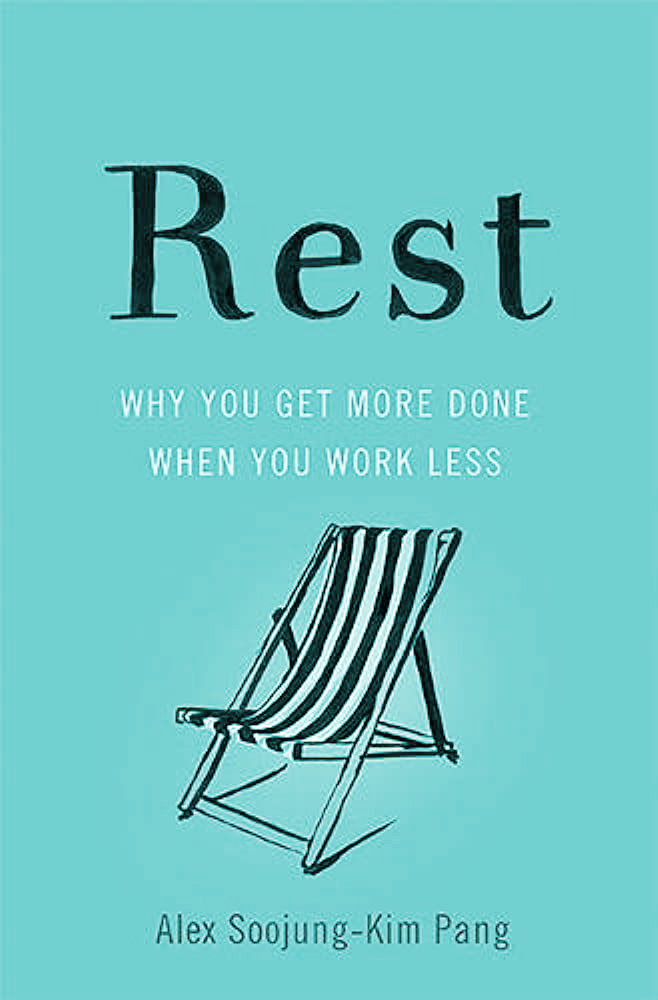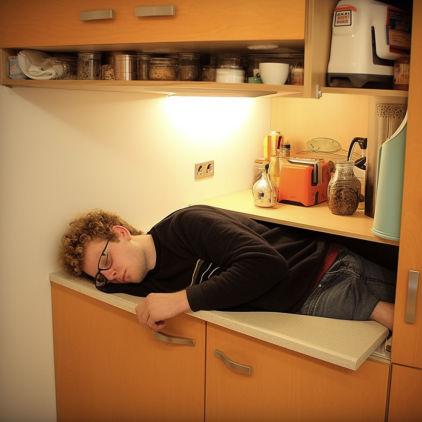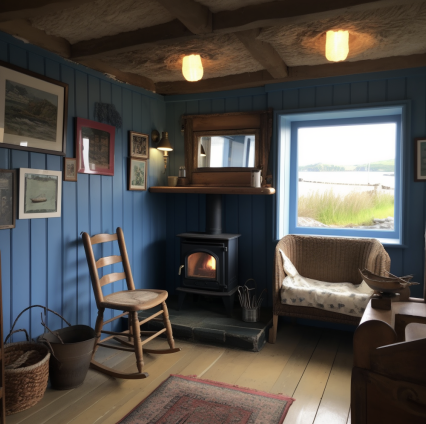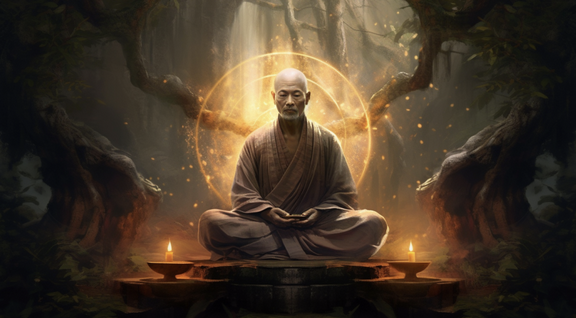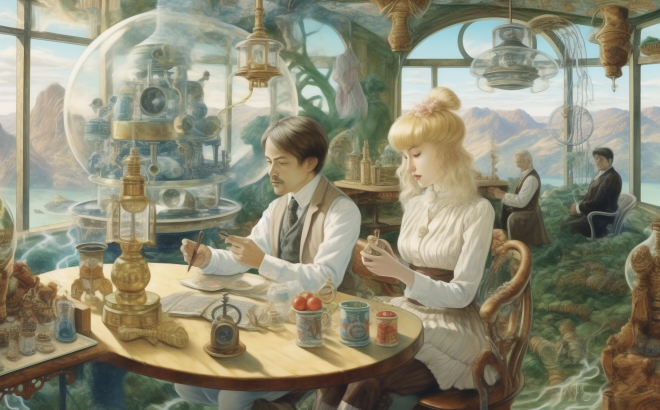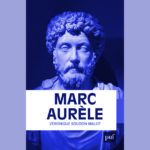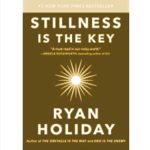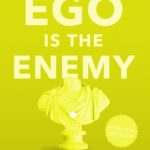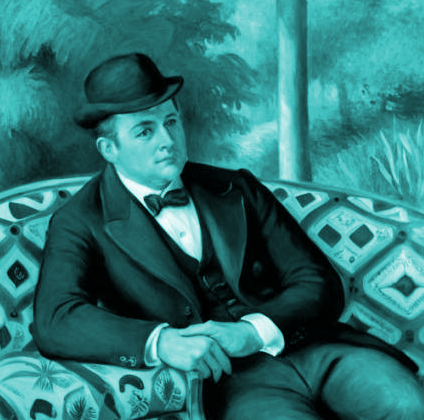In today’s fast-paced and productivity-driven world, finding the right balance between work and rest has become increasingly important. “Rest” explores various perspectives on the significance of rest and how it contributes to our creativity, productivity, and overall well-being. From emphasizing the benefits of starting early and engaging in deep work to the power of napping and sabbaticals, as well as the role of deliberate rest in achieving mastery, this collection of ideas challenges conventional notions of work and highlights the importance of incorporating rest into our lives. Additionally, it explores the concept of deep play and its ability to foster creativity and rejuvenation. Ultimately, by understanding and embracing the value of rest, we can strive for a healthier and more fulfilling work-life balance.
If You Want To Create, Start Early And Stop After 4 Hours Of Deep Work
If you want to create something truly remarkable, starting early in the morning may be the secret to your success. By beginning your work when your mind is fresh and focused, you are setting yourself up for a productive day ahead.This approach to work has become increasingly popular in recent years, with more and more successful people embracing the idea of using the early morning hours to get things done. This is because research has shown that the early hours of the day are the best time for creative work.
There are a number of reasons why early morning work is so effective. First of all, your mind is often rested and clear after a good night’s sleep, which means that you can approach your work with a sense of clarity and focus. You are less likely to be interrupted or distracted during the early morning hours, which means that you can devote yourself fully to your creative pursuits.
Another reason why the early morning hours are so effective for creative work is that our brains are often at their most creative during this time. This is because when we first wake up, our brains are focused on problem-solving and generating new ideas. This is the perfect time to be creative and come up with new ideas.
If you want to create something truly remarkable, it’s important to set aside a block of time for deep work. This means that you need to devote yourself fully to your work, without interruption, for a period of at least four hours. During this time, you need to eliminate all distractions and focus solely on your creative endeavors.
The idea of deep work was popularized by author Cal Newport in his book “Deep Work: Rules for Focused Success in a Distracted World”. In this book, Newport argues that the ability to focus deeply on a task is becoming increasingly rare in our distracted world, and that this ability is essential for true success in any field.
By setting aside a block of time for deep work in the morning, you are ensuring that you have the time and the mental energy to truly focus on your creative pursuits. This can be a challenge for many people, as our modern world is full of distractions and interruptions. However, with practice, you can train your mind to focus deeply for longer periods of time.
Have A Nap
Have a Nap: The Power of Resting for Increased Productivity
Do you ever feel like your brain just needs a break from the continuous flow of information and work demands? You are not alone. Our modern work culture glorifies the idea of busy-ness and productivity without stopping to consider the importance of rest and rejuvenation for our mental health and productivity.
Enter napping. Napping has long been disregarded as a lazy or unproductive activity, particularly in the workplace. But the truth is, napping can provide essential benefits to your brain that no energy drink or supplement could ever replicate.
Research has shown that a 20-minute nap can significantly improve cognitive performance, alertness, and mood. It’s like you’re creating another day within your day. Think about it, if you take a short nap during the day, you’re effectively resetting your brain, giving it the opportunity to recharge, refuel and come back stronger.
The science behind napping is simple: when you rest, your brain has the opportunity to disconnect from external stimuli and distractions, allowing it to function more efficiently when you wake up. Interestingly, our brains naturally move through several phases during sleep, and by napping for just 20 minutes, you’re allowing your brain to refresh itself without falling into deeper stages of sleep that can leave you feeling groggy.
So, what are the benefits of napping?
1. Increased Productivity
One of the biggest benefits of napping is increased productivity. By allowing your brain to recharge, you’re giving it the capacity to work more effectively when you wake up. Studies have found that those who nap for just 20 minutes can improve their cognitive performance, reaction time, and overall productivity.
2. Enhanced Creativity
Napping has also been linked to increased creativity and problem-solving abilities. When your brain is able to rest and recharge, you have more mental bandwidth available to be creative and find innovative solutions to problems.
3. Reduced Stress and Improved Mood
Let’s face it, stress is a part of everyday life, whether it’s work-related or personal. Napping can be an incredibly powerful tool to help reduce stress levels and improve your overall mood. When you’re feeling overwhelmed or anxious, taking a short nap can help your brain relax and come back to the task at hand feeling refreshed and re-energized.
4. Improved Memory
Napping has also been linked to improved memory function. During rest, your brain has the time to process and consolidate information, which can lead to better retention of new information. So, if you’ve been struggling to memorize new concepts or ideas, taking a short nap might be just what you need to improve your recall.
Four Hours Daily
In today’s fast-paced world, the pressure to always be productive can be overwhelming. Many of us strive to work long hours, putting in more effort into our work, in order to achieve success and recognition. However, what if we told you that working creatively for more than four hours a day may not actually be the best strategy for your brain, or your overall productivity? Research shows that our brains have limitations in terms of the resources that they can allocate to creative functions. In order to give your brain the rest and recovery it needs, setting a reasonable goal of four hours of daily creative work could be the perfect balance. Think of it as treating your creativity as a muscle – you need to give it time to recover and grow, otherwise it risks becoming injured or even burning out.
Despite living in an era based on the industrialisation paradigm, where productivity is expected to mimic that of factories, this may not always be the most effective approach. In fact, it’s often the renaissance men of today’s society – individuals with a diverse range of skills and interests – who are responsible for the most innovative and ground-breaking improvements.
Therefore, it’s time to shift our perspective on productivity and focus instead on working smarter, rather than harder. By setting realistic goals and taking time to rest and restore our creative muscles, we can improve our overall productivity and avoid the risk of burnout. It’s important to recognize that our brains – like all other muscles in our body – need breaks, sleep, and playfulness in order to operate at their best.
Sabbaticals
Sabbaticals: How Taking a Break Can Boost Your Creativity
We all lead busy lives. From hectic work schedules to family responsibilities, it can feel like we are always on the go. Sometimes, we need to take a step back, to unplug and take a break. That’s where sabbaticals come in.
A sabbatical is a period of time away from work, usually taken every seven years or so. It’s an opportunity to recharge, explore new interests, and gain a fresh perspective on your work and life. Sabbaticals can be organized in different ways, from a full year off to a few weeks or months. The goal is to take an extended break from work, often with the intent of returning with renewed energy and creativity.
One of the primary benefits of a sabbatical is the opportunity to be more creative. Taking a break from work can stimulate your mind and allow you to think more creatively. With no deadlines, meetings, or daily work pressures, you’re free to explore new ideas and think outside the box. You may also find that your creativity flows more easily when you have a change of scenery or are exposed to new experiences.
Some famous people have taken sabbaticals and found them to be life-changing. For example, an architect named Christopher Alexander took a whole year off every seven years to explore other interests. Likewise, a famous Catalan chef named Ferran Adria took a six-month break every six months to focus on developing new cooking techniques and exploring culinary innovations. Even tech CEOs like Bill Gates and Mark Zuckerberg have been known to take week-long sabbaticals to unplug and recharge.
When planning a sabbatical, it’s essential to prepare appropriately. The goal is to improve your clarity and creativity, so make sure you plan activities that will spark your interest. A good idea is to engage in mindful activities such as meditation, yoga, or hiking. It’s also important to budget correctly so that you can enjoy your time off without worrying too much about finances.
Mastery Isn’t Only 10 000 Hours Of Deliberate Practice…
Mastery has often been equated with 10,000 hours of deliberate practice, a notion popularized by Malcolm Gladwell in his book “Outliers”. This concept, however, has been challenged by Alex Pang in his book “Rest”. According to Pang, rest is not only important, it is essential for achieving mastery.In the fast-paced world we live in today, rest has become a rare commodity. With constant distractions such as social media, TV shows on demand, and a never-ending list of entertainment options, it’s no longer something we can take for granted. Rest now has to be deliberately sought out and protected, isolated from distractions and the noise of the world.
The idea of deliberate practice, while important, does not take into account the importance of deliberate rest. In fact, it is during rest that our bodies and brains restore themselves and ideas simmer and gestate, leading to breakthroughs and epiphanies. Rest is not just a luxury, it is a necessity for creative and cognitive excellence.
Pang’s book makes a case for why taking breaks and disengaging from work can help us achieve success. Taking time to rest and recharge can often be more productive than working non-stop, leading to better decisions, higher productivity, and greater creativity.
Research also shows that breaks can help improve attention and performance. In a study conducted by the University of Illinois, researchers found that participants who took two short breaks during a task performed better than those who worked non-stop. In another study, researchers found that people who took a 30-minute nap showed improved cognitive function compared to those who didn’t.
None of this is to say that deliberate practice isn’t important. Indeed, it is crucial for achieving mastery in any field. However, it is equally important to understand the value of deliberate rest and the role it plays in long-term success.
Rest Is Not The Absence Of Work. It’s The Augmentation Of Work
Rest is not the absence of work. It is the augmentation of work. This may sound counterintuitive, but it’s true. We often think of rest as a break from work, a chance to recharge our batteries so that we can get back to work refreshed and ready to go. While this is partially true, rest plays another critical role in our work: it’s the key to mastery. According to research, mastery requires 10,000 hours of deliberate practice, plus 12,500 hours of deliberate rest, and 30,000 hours of sleep. This means that without adequate rest and sleep, there is no way we can reach mastery. Work and rest are not opposing forces, but rather complementary ones that work together to help us excel.
Good work requires good rest, and good rest requires good work. You cannot fully do one without the other. This means that we must stop thinking of work and rest as being in opposition to each other. Instead, we need to learn how to become masters of both.
Masters in their field have learned to become masters at resting. They know that rest is not just for recovering from your work, but also a way to enhance it. When we rest, we allow our brains and bodies to recover and recharge. This allows us to return to our work with increased focus, productivity, and creativity.
So, what does deliberate rest look like? Deliberate rest is an intentional activity that is designed to help you recharge. Examples include going for a walk, taking a nap, reading a book, or spending time with loved ones. The key is to engage in an activity that is relaxing, enjoyable, and promotes recovery.
Sleep is also crucial when it comes to mastering your craft. Sleep is when your body repairs itself, and your brain processes everything you learned throughout the day. Without adequate sleep, it’s impossible to retain information, focus on tasks, or perform at your best. As such, it’s vital to prioritize getting enough quality sleep each night.
Deep Play
“[Deep play describes] activities that are rewarding on their own, but take on additional layers of meaning and personal significance.”
“Because play is voluntary, intrinsically rewarding, mentally and physically engaging, and imaginative, it’s often absorbing and effortless.
The concept of deep play may seem like a foreign and even frivolous idea in our fast-paced world. Our society glorifies productivity and success, often at the cost of true rest and relaxation. However, deep play may be the key to unlocking a deeper level of creativity and productivity in our lives and work.In other words, deep play refers to engaging in activities for the sheer joy and pleasure of them, rather than for the rewards or benefits they may bring. It is a state of mind where we are fully absorbed in the activity, and the outside world fades away. This characteristic is also known as being “autotelic.”
Many of us may have experienced this state of deep play at some point in our lives – perhaps when we were engrossed in a hobby, playing a game, or even just taking a walk in nature. During these moments, our minds are fully engaged, and we may even feel a sense of timelessness or flow.
According to research, deep play can have many benefits for our mental and physical health. It can reduce stress, increase creativity and problem-solving skills, and even improve our immune system. However, perhaps the most important benefit of deep play is the rest it provides for our brains.
When we engage in activities with the primary goal of achieving some result or benefit, our brains are constantly working and analyzing. We may be preoccupied with thoughts of the future and the potential outcomes of our actions. In contrast, deep play allows our minds to rest and recharge. It frees us from the pressure of achieving specific goals and allows us to be fully present in the moment.
The holy grail of deep play would be finding work or business that puts us in this mental state most of the time. If we can spend most of our time in our work in the state of deep play, we have a massive edge against any competitor. Not only do we enjoy our work more, but we are also likely to be more successful and productive in the long run.
Many successful entrepreneurs and leaders have talked about the importance of finding work that aligns with our passions and interests. When we are engaged in work that we truly enjoy and find meaningful, we are more likely to enter a state of deep play and reap the benefits that come with it.
“If your work is your self, when you cease to work, you cease to exist”
In today’s society, it’s easy to fall into the trap of defining ourselves solely by what we do for a living. Our culture often glorifies workaholism and places an unhealthy emphasis on career success. We are taught to equate our worth with our job title, salary, and accomplishments at work. But what happens when we retire or lose our job? According to the notion, “if your work is your self, when you cease to work, you cease to exist.” This statement is dangerous and false.Work has become such a significant part of our identity that it can be challenging to separate ourselves from it. We carry our job titles and industry jargon around like badges of honor, but at what cost? Our self-worth should not depend on our job performance. This kind of thinking can lead to burnout, lack of fulfillment outside of work, and, ultimately, a crisis of identity.
We are more than our careers. Our inner qualities, such as kindness, compassion, and creativity, are what make us unique and valuable. When we define ourselves solely by our jobs, we limit our potential to explore new interests and passions that can lead to a more fulfilling life. A job should not consume our entire being; it should be a part of our identity, but not all of it.
The pressure to excel at work and achieve success can also lead to a feeling of inadequacy. We often compare ourselves to others in our field, leaving us with feelings of envy, inferiority, and self-doubt. These negative emotions can spill over into other areas of our lives and affect our relationships with friends and family.
It’s essential to reframe our mindset when it comes to our careers. Rather than relying on work to define our identities, we must cultivate a rich inner life that includes a range of interests and passions. Our work can be a source of fulfillment and satisfaction, but it should not define us entirely.
The idea that “if your work is your self, when you cease to work, you cease to exist” is a dangerous and misleading concept. We must learn to define ourselves by our inner qualities and values, not just our careers. This shift in mindset can lead to a more joyful and fulfilling life outside of the office. So let’s leave behind the notion of Homo Economicus and embrace our full humanity as Homo Sapiens (i.e wise humans).
“Breaks can be vitally important, but a vacation within the context of full-time work probably will only give you 3-4 weeks of relief”
The modern workday is a balancing act between productivity and burnout. With the endless to-do lists, deadlines, and constant demands from bosses, it’s no surprise that many of us feel overworked and overstressed. But what if there was a way to break this vicious cycle and boost our productivity? Research suggests that taking regular vacations could be the answer.
According to a study published in the Journal of Happiness Studies, vacations provide a productivity boost of three to four weeks. This means that the benefits of a vacation – including improved mental and physical health, reduced stress levels, and increased creativity – can last for weeks after returning to work.
However, the traditional way in which we structure our workdays and our work year doesn’t provide the best ratio between rest and work. Typically, we work for months on end without a significant break, and then take a week or two off for a vacation once a year. This creates a situation in which our productivity may suffer for extended periods.
So, what can we do about it? One solution proposed by experts is to take frequent, shorter vacations throughout the year. While the idea of taking a week-long vacation every month may seem unrealistic, even a few days of rest and relaxation can have a significant impact on our productivity.
By incorporating regular, short vacations into our work schedule, we can reap the benefits of time off without falling behind on our work or overwhelming our colleagues. Not only will we perform better on the job, but we’ll also enjoy a better quality of life and improved overall health.
Of course, this approach isn’t without its challenges. Employers may be hesitant to grant frequent time off, and coordinating schedules can be difficult when working with teams. But with a little creativity and planning, it’s possible to find a vacation schedule that works for everyone involved.
Ultimately, the key takeaway is this: rest is essential for productivity. By taking regular vacations, we can recharge our batteries and return to work with renewed energy and focus. So, whether it’s a long weekend away or a mid-month break, don’t underestimate the power of a little time off. Your productivity – and your well-being – will thank you for it.
Personal addings:
The World Belongs To The Creatives
The world belongs to the creatives. This statement has become more and more prevalent over the years as our society has shifted from one based on physical labor to one that values innovation and creativity. The value we bring to society is no longer just measured by how much we can produce, but also how much we can create.In today’s world, creativity has become the driving force behind almost everything. It allows us to come up with new and innovative ideas, products, and services that can be used to make people’s lives easier, solve complex problems, and even change the way we think about the world.
But what exactly is creativity? Creativity is the ability to solve problems in new and original ways, to think outside the box and see things from a different perspective. It’s the ability to connect seemingly unrelated ideas and come up with something new.
The world belongs to the creatives. This is a statement that has never been more true than it is today. In a world where technology is constantly changing, it’s not enough to simply keep up with the latest trends or technological advancements. To truly stand out, we need to be creative.Throughout history, it has always been those who bring value to society that stand out. Think of Beethoven, who brought us some of the most beautiful symphonies; or Steve Jobs, who revolutionized the way we interact with technology. These individuals stood out because of their creativity. They didn’t simply follow the latest trends, they created them.
In today’s society, creativity is more important than ever. With the rapid pace of technological advancements, it’s not enough to simply stay up-to-date. We need to be constantly innovating and pushing the boundaries of what’s possible. And this is where creativity comes in.
Creativity allows us to think outside the box and come up with new solutions to old problems. It allows us to find beauty in the mundane and to create art out of chaos. It’s what sets us apart from machines and allows us to connect with each other on a deeper level.
But creativity is not something that’s innate in all of us. It’s something that needs to be cultivated and nurtured. Whether you’re an artist, an entrepreneur, or a scientist, creativity is key to success. And there are many different ways to foster creativity – from engaging in new experiences, to taking risks, to simply giving yourself time to daydream.
In the end, the world belongs to the creatives. It’s those who can bring value to society through their innovative ideas and creative thinking that will stand out and make a difference. So, if you want to succeed in today’s society, embrace your creativity and let it guide you towards a brighter future.
So what can we do to enhance our creativity? One way is to embrace a certain level of risk-taking. Creativity often involves taking a chance on something that hasn’t been done before. It’s about being willing to fail and learn from those failures.
Another way to enhance creativity is to expose ourselves to new experiences, ideas, and perspectives. When we open our minds to new ideas, we become more innovative and creative.
But perhaps the most effective way to enhance creativity is to simply practice it. Like any other skill, creativity can be improved with practice. Set aside some time each day to brainstorm, dream, and create. Whether it’s writing, drawing, or designing, the more you practice, the more creative you’ll become.
Our capacity to innovate and come up with new ideas and solutions is what sets us apart from the rest of the society. As we continue to shift towards a more creative and innovative society, it’s imperative that we continue to embrace and enhance our creativity. By doing so, we’ll be able to create a better, more prosperous future for ourselves and for the world around us.
Functionality Of The Brain
Have you ever wondered how our brain works when it comes to creativity and how it relates to our survival instincts? Our brain has evolved over centuries of human history, and its functionality has adapted to serve our needs as human beings. However, what does this mean for our creativity, and how can we tap into our cognitive resources to express our creativity fully?Our brains have a primitive system that is responsible for our survival instincts. Called the reptile brain, this is the oldest part of our brain and is responsible for our fight or flight response. The reptile brain is continually scanning our environment for dangers, and it is always on the alert for anything that may pose a threat to our survival. This is why it is difficult to be creative when we are in a state of fear or anxiety.
The next part of our brain is called the limbic system. This system is responsible for our emotional responses, including our moods, motivations, and desires. It allows us to experience joy, sadness, love, and many other emotions that can influence our behaviour and creativity. However, when the limbic system is activated, it can sometimes interfere with our cognitive functions, making it difficult to think clearly and creatively.
Finally, we have the conceptual brain or neocortex, which is responsible for our cognitive and analytical abilities. The neocortex is where we form our thoughts, create solutions to problems, and think abstractly. It is also the part of the brain where creativity is expressed. However, because it is the most sophisticated of the three systems, it receives the least amount of brain power. As a result, when we are feeling stressed, anxious, or emotional, our neocortex is often not functioning at its highest level.
In summary, our brain is designed to prioritize survival, emotions, and finally, high-level cognitive functions such as creativity. Therefore, if we want to maximize our creativity, we need to learn how to activate our neocortex while minimizing the activation of our reptile brain and limbic system. We can do this by practicing mindfulness, learning to manage our emotions, and reducing stress in our lives. Additionally, creating an environment that fosters creativity and inspiration can help activate our conceptual brain.
It’s also worth noting that our ability to express creativity is not innate. Our environment, upbringing, and life circumstance can significantly influence our creativity. For instance, children growing up in a war zone may have fewer opportunities to express their creativity than children in peaceful countries. Hence, it is essential to create a conducive environment that supports creativity, both for ourselves and the future generations.
Our brain is capable of incredible creative abilities, but to optimize its effectiveness, we need to understand how it works. Creating a conducive environment that promotes creativity, managing our emotions, and learning to be mindful, can all help us to tap into the full strength of our neocortex. With practice and a supportive environment, we can enhance our creative potential beyond our wildest imaginations.
The World Will Belong To The New Renaissance Men And Women
What is the Second Renaissance?
The Renaissance is the rediscovery in Europe of the Greco-Latin heritage after centuries of obscurantism. This was due to the fact that wealthy city-states (Florence, Genoa, Venice, etc.) emerged in northern Italy thanks to trade and innovations that allowed the emergence of a wealthy family eager to show his status in society to gain or keep power (Borgia, Medici etc.). Because art has always been intimately linked to religious and political power. These wealthy families paid artists to recreate the art of antiquity as it was considered the golden age of civilization and Italy was rich in artifacts from that time.
The second renaissance can be linked to the rediscovery of the creative way of working before the industrial age, when the population was mainly peasant* and artisanal. The most talented workers are not really the most specialized because they can be easily replaced. A company’s most valuable asset is the person who masters the holistic aspect of production who is the craftsman in pre-industrial times or the CEO in the industrialized era.
*despite a difficult life, the peasants adapted the intensity of their work to the seasons (winter being the season during which they were less solicited)

